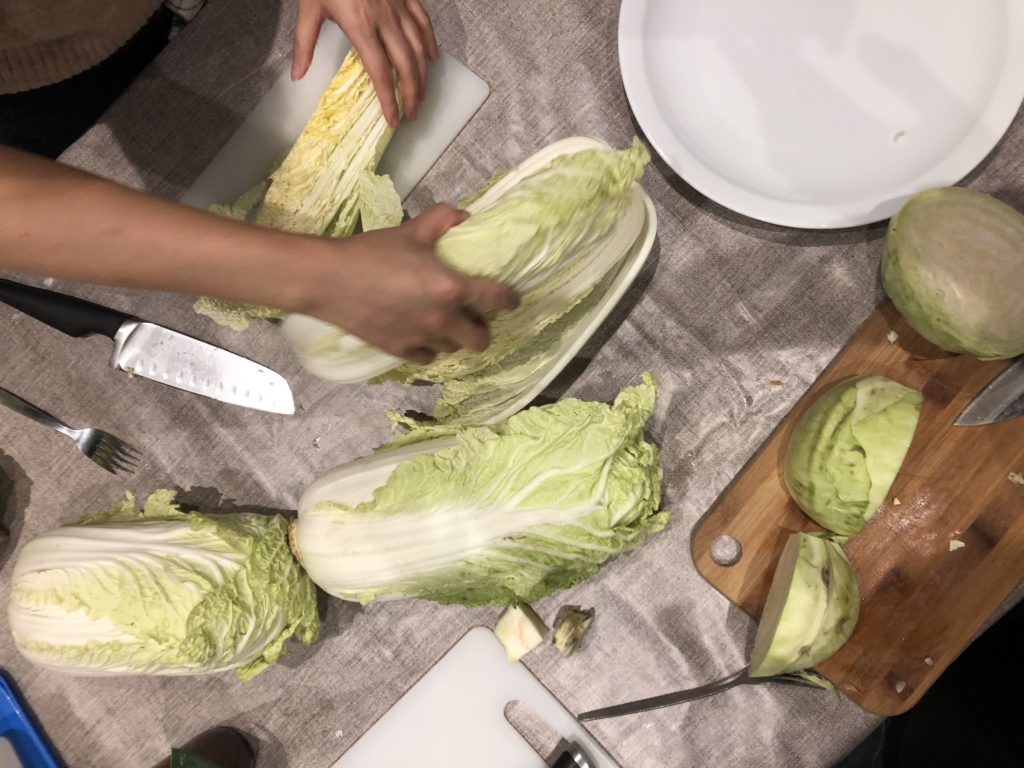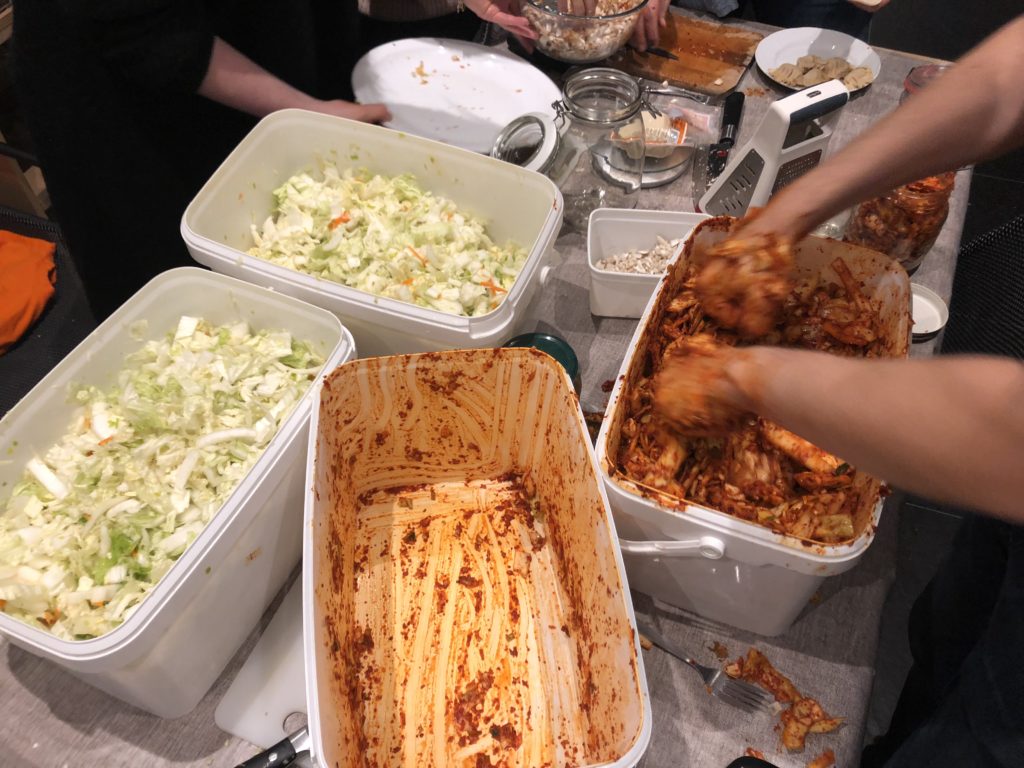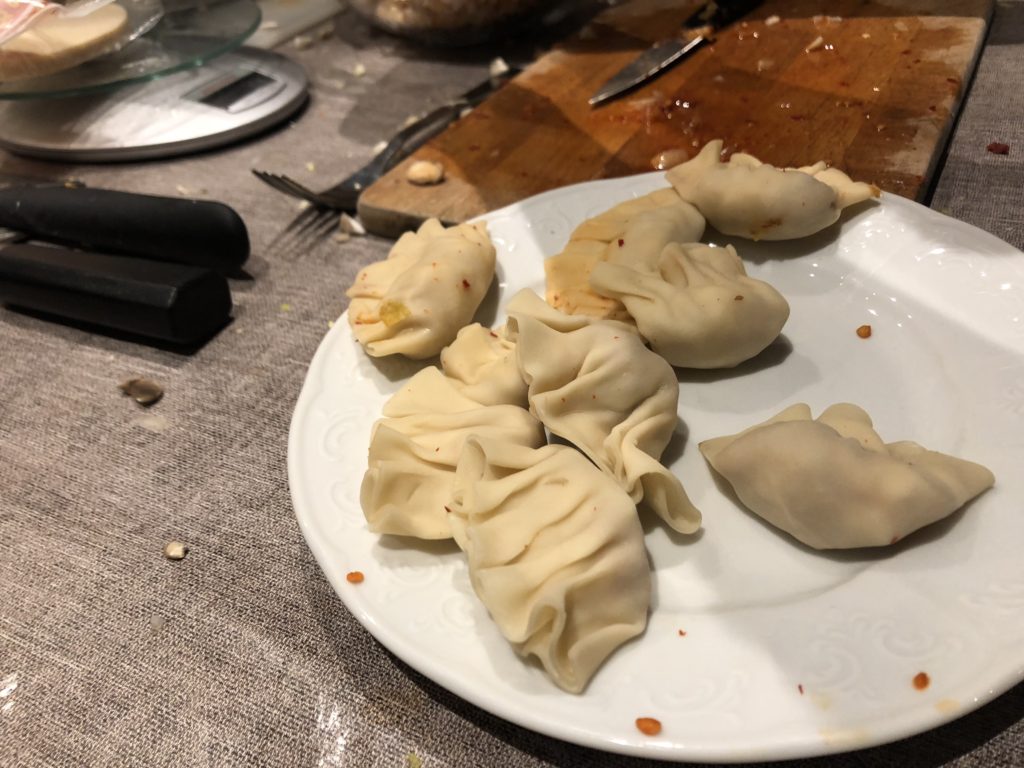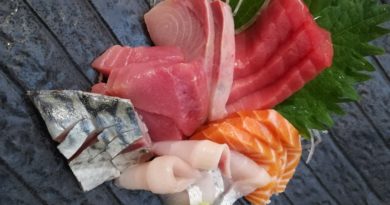The art of fermenting made easy by Fermenthings, Brussels
Fermenting to me always seemed like a huge challenge, something that takes time, patience and a lot of expertise. And if you think about it, so many things are fermented: wine, coffee, sourdough bread, pickles and actually my favourite Polish soup ‘Zurek’ is made by fermenting a flour-water mix. Finally, of course there’s the all-time classic: kimchi. Kimchi is a Koran fermented cabbage, mixed with leeks, garlic, ginger, soy sauce, fish sauce and Korean chili flakes.
Keen to face a new challenge, I registered for the kimchi class at Fermenthings, a small shop that specializes in crafted beers, kombucha and other fermented products. Most importantly, you can buy starters for kombucha or sourdough and they also sell kimchi and miso. Classes take around 2-3h and teach you the basics about fermentation, while showing you that it’s not as difficult as you might’ve thought.

We started the kimchi class with a bottle of kombucha and some homemade 2-month-old kimchi, one 1-month-old and one made with light ingredients only, so-called “white kimchi”. We then moved to the preparation, which meant first, salting a big pot with water so it reached the saltiness of sea water and then soaking small cut white cabbage and Asian cabbage in the water for around an hour. During this hour, we chopped the leeks, carrot, garlic, ginger and some pears for the white kimchi. To the red mixture we added a lot of Korean chili flakes, honey instead of sugar and because the kimchi we made at Fermenthings was vegan, instead of the fish sauce to start the fermenting process, we used pickle juice and apple cider vinegar. After everything was poured into a big container (except for the cabbage) I volunteered for getting my hands dirty and started mixing everything so it turned into a moist, sticky dark red paste that smelled amazingly spicy and rich in flavor. We added the cabbage (the salt water drained) and I continued massaging the cabbage with the seasoning so it soaked up all the beauty of the paste.

To prevent us from leaving hungry, we prepared some dumplings towards the end of the class, filled with kimchi – not ours – and Asian mushrooms, which were boiled in a miso broth. Simple and very delicious.

Once finished we started filling the jars we brought along with the homemade white and red kimchi. I left the jars on room temperature for two days and then put some weight on the cabbage and transferred the jar to the fridge. It’s sitting there now, producing beautiful fermentation juices and ready to be eaten after two weeks minimum, or longer if you like the fermentation to be more intensive.
What I’ll do with all that kimchi? It’s super healthy so I’ll just dig into the jar and eat it like this. I might make some Tofu Schnitzels with it, or maybe some dumplings, we’ll see.
If you want to take part in one of the Fermenthings classes check their Facebook Page here.
They’re moving soon, but I’m sure there’ll be a lot of new exciting classes in the new year.

Gotten hungry? Try Fermenthing’s recipe for kimchi:
80g mixture Korean chilli powder and dried chilli flakes
120g of fine chopped leek
2 gloves of minced garlic
20g of grated ginger
1 shot of fish sauce (or pickle juice)
1 tablespoon of salt (seasalt, as pure as possible)
1 tablespoon of sugar (unrefined)
Mix it all together until you can make little balls out of the paste, it has to make a squichy sound and feel quite compact. Note: there is no perfect kimchi paste, it is the one you like that will be the perfect one. See this as the basic that works, add other ingredients, or change some of the proportion. I like that mine has that smell of grated ginger coming through at the end. I don’t make it to spicy, but I add chopped yellow or red peppers in it if I want to give it a certain punch.



